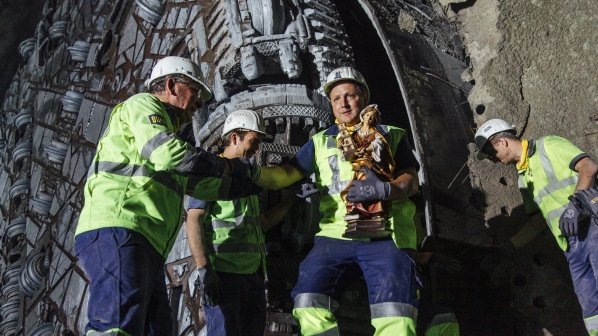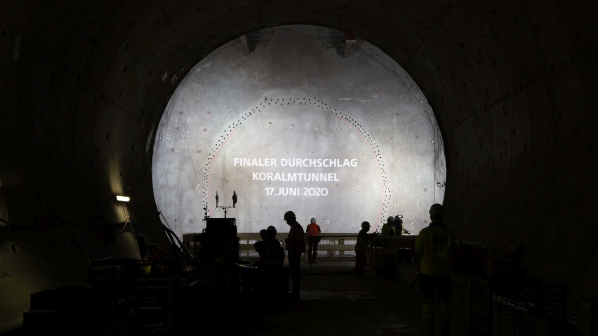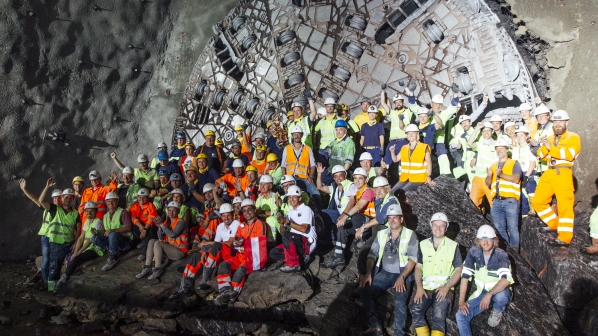The dual-bore tunnel is the third longest rail tunnel in Europe, and includes a 900m emergency tunnel, intersecting tunnels and ventilation shafts.
Three 2500-tonne tunnel boring machines (TBMs) dug 45,480m of tunnel over seven years, with other tunnelling completed using the drill-blasting method. Construction was complicated by fault lines through the mountains, with the geological conditions resulting in two TBMs being dismantled and reassembled.
The tunnel, which connects the regions of Styria and Carinthia, is currently being fitted with an interior shell, with half of the tunnel from the Carinthia side completed, while two-thirds of the tunnel from the Styrian side is complete.

The breakthrough also marks the completion of tunnelling for the full 133km Koralm Railway, which includes the St Kanzian tunnel chain and the Granitztal tunnel. Construction is currently underway on the St Paul im Lavanttal and Weststeiermark stations. The complete line will have 370km of track and 23 new and upgraded stations, and is due to open in 2025.
Running south from Graz Main Station, the Koralm Line will share the existing line’s alignment towards the Slovenian border as far as Feldkirchen, branching off onto a parallel alignment to Graz Airport and Werndorf. From here, the line turns west and follows the Lassnitz valley to a junction with the Graz Köflach Railway (GKB) at the new Weststeiermark inter-city station. The line then enters the Koralm Tunnel, emerging near St Paul in Carinthia, where the new Lavanttal station will be situated. This will be an interchange with the existing Zeltweg - Wolfsberg line. The line then continues west, crossing the River Drau twice before reaching Klagenfurt Main Station.
The line will reduce Graz - Klagenfurt travel times from three hours to 45 minutes and shave four hours off Graz - Venice journeys. Vienna - Klagenfurt will be cut from 3h 51min to 2h 40min, including journey time savings from the use of the Semmering Base Tunnel which is expected to open in 2027.

The line forms part of the 1800km Baltic-Adriatic corridor connecting Italy and Slovenia with Poland, and the project received €57m from the Connecting Europe Facility for 2014-2020. The Koralm Line was also allocated €2.6bn in ÖBB’s infrastructure investment plan for 2017-2022.
“With today’s tunnel breakthrough, we can celebrate a historic event that is of crucial importance for all of us and for future generations,” says Carinthia governor, Mr Peter Kaiser. “The Koralm tunnel is an economic and employment engine, because it will accelerate cooperation and innovation, and but will not only bring Carinthia closer to Styria and Vienna, it will also open up new opportunities for cooperation of the European regions along the Koralm Railway.”
“Mobility is an essential prerequisite for the development of the business and living standards in Styria,” says Styria’s governor, Mr Hermann Schützenhöfer. “I'm proud of it, but we cannot rest on it. We must continue to do everything we can to push ahead with transport and infrastructure projects in our country.”
For detailed data on new lines around the world, subscribe to IRJ Pro.

